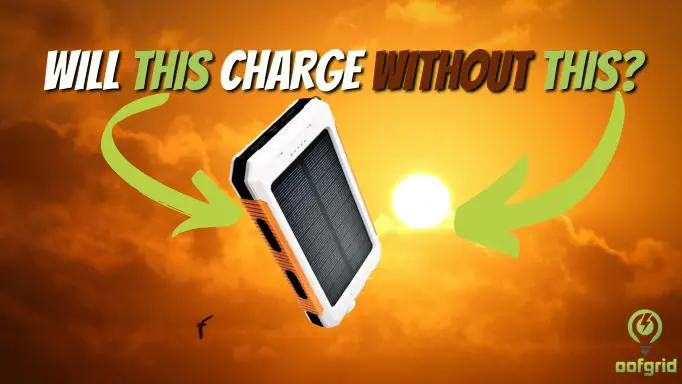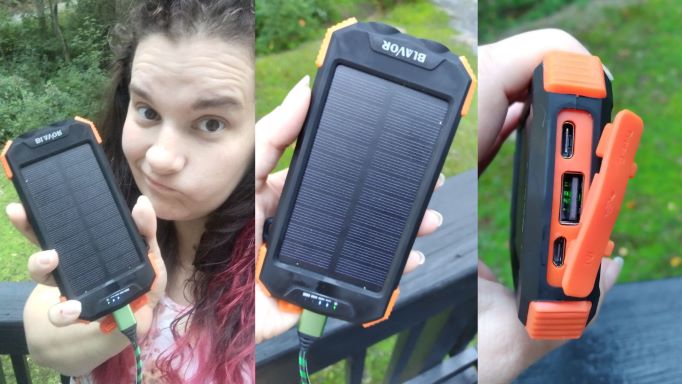Generators are useful appliances that convert mechanical energy into electricity in the case of a power outage, to provide power to RVs when traveling, in case of damage to the grid, and other essential applications.
However, these appliances need fuel for operation and it goes without saying that at one point the fuel in the generator’s fuel tank is bound to run out.
But what happens when your electric generator is short on fuel while it is still running?
Running a generator that is low on gas can cause damage to your electronics and other electrical devices due to power drops. This is also bad for generators that use fuel pumps to supply gas to the engines due to air build-up within the generator and which can also cause loss of the residual magnetism in the generator’s alternator.
These are some of the things that can happen when running an electric generator that is low on gas but the damage can differ depending on the type of generator you are using.
Gasoline and portable generators suffer the least damage over time while the lifespan of larger diesel generators can be significantly reduced when they are continually operated on low fuel.
Contents
What Happens When You Run a Generator on Low Gas?
If you are using a more portable gasoline generator, you are less likely to run into problems when operating it on low fuel. This is because these generators rely on gravity to supply fuel from the tank to the engine which drives the alternator’s rotor.
However, the generator can also lose residual magnetism over time if it is continually operated on low fuel day after day. This can be easily fixed as you will see later in this article.
Loss of magnetism can also occur on larger diesel generators that need to be re-magnetized if that happens.
The other issue that you can run into is overheating on the generator’s fuel pump if it uses a fuel pump to supply fuel to the engine’s carburetor or fuel injection system.
Fuel pumps rely on the fuel from the gas tank for cooling and if the gas tank is low or almost empty, the gas is replaced with air which causes the pump to get hot. However, this does not instantly damage the fuel pump as the generator eventually shuts down when the fuel runs out but can reduce the generator’s lifespan over time.
Also, if the pump is sucking air into the engine, the engine will need to be primed after refueling which can be slightly challenging to carry out.
Lastly, running a generator that is low on fuel can have lasting damage to your electrical appliances, especially delicate AV equipment such as TVs, sound systems, computers, and so on.
A generator that is low on gas will produce a low voltage which can alter the voltage pulses on electronics as they are designed to operate on a specific voltage. Drops in the voltage they draw can easily cause damage; that is why you need some sort of power conditioning when using a generator to drive your electronics.
How to Fix Damage Due to Running a Generator on Low Gas
Smaller gasoline generators should not have a problem when used on low gas. They only need to be refilled before being used again unless their magnetic assemblies lose charge.
Diesel generators, on the other hand, need to be primed before being used again or re-magnetized if they lose residual magnetism.
How to prime a diesel generator that has run out of fuel
This process is also known as ‘bleeding’ and it is essentially removing air that may have been sucked in by the fuel pump when it was running on ‘fumes’.
Tools you will need include;
- Your generator’s user manual
- Enough fresh diesel to refill the tank
- A wrench
Most user manuals will have a rundown of how you can successfully bleed the diesel engine on your generator. You can also use the user manual to get familiar with your generator parts for easy fixes.
Here are the general steps and guidelines for priming your diesel generator;
- Fill your generator’s fuel tank with fresh diesel at a level higher than the fuel filter. The diesel should move into the fuel filter and fill it.
- Use a wrench to loosen the nut on top of the fuel filter. This will ensure that the fuel drains up and in the process, the air within the fuel filter will rush out.
- Once the air is flushed out, seal the filter by tightening the nut using your wrench.
- Crank your generator’s engine up to build pressure within the fuel pump but without starting the engine.
- Next, locate the injector system where you need to access the injectors. Loosen the nuts injectors which will let the air out. Do this on all the injectors one at a time making sure that you tighten each nut once all the air is leaked out.
- Crank the engine up again and repeat the process a few times until you bleed out all the air that was sucked in when the generator ran out of gas.
- Once all the air is out, the generator should easily start when you crank it up.
This process should be fairly easy once you get familiar with the various parts, from the tank to the injectors and should only take you a few minutes to get the generator working again.
The process may also differ depending on your generator’s model which is why is important to refer to the user manual that came together with the generator but you can also get an online PDF copy on the manufacturer’s website.

How to re-magnetize (flash) your generator
Flashing a small generator should be fairly easy as you can do this using a corded drill. All you will need to do is connected the drill to the generator’s AC outlet, turn the generator on and as it runs, turn the drill’s chuck backward in the opposite direction as you press down the drill’s trigger.
Doing this will send a current to the generator’s alternator and restore its lost residual magnetization. However, this method does not always work.
The second method that you can use to flash a generator. Is by using a DC generator battery. To do this you will need to follow the following steps.
- Locate your generator’s voltage regulator with the help of your user manual. You will see 2 wires (one is white or black and the other wire is red) that lead to the generator’s brushes (again refer to your manual).
- Unplug these wires from the brushes.
- Connect the negative (neutral) wire from the battery to the negative lead on the brush (Usually farther on the brush block) and the positive wire (+12V) to the positive lead on the brush (usually closer on the brush block).
- Start the generator’s engine and let it run for about 3 seconds (give or take). Do not touch the regulator during this process as you risk getting shocked.
- Turn off the generator’s engine and disconnect the wires from the battery on the brushes.
- Then reconnect the wires you had disconnected in step 2 to the brushes appropriately. The generator should work as it was meant to once you are done with this process.
In conclusion
There are obvious damage risks that are involved in running a generator that is out of gas as you can see above but most damage is temporary and can be fixed.
With that in mind, running a generator on fumes, especially a diesel generator is highly discouraged.






